■辦學理念
北門社區大學服務範圍包含臨海的北門、將軍、七股及學甲、佳里、西港共六區,擁有台南市約三分之二的海岸線,百年前該區大部分土地仍屬倒風內海與台江內海之海域,可知此區域的自然環境變動之大對在地居民的生活文化與地方產業有著歷史性的深刻影響。設校之初此六區在行政區域劃分上統稱北門區,故以北門社區大學為名。此區域不論地理位置或是資源分布均屬偏遠地區,居民以農漁業為主,雖民風純樸且重視鄰里人際間之互動,但人口老化嚴重、社會資源及資訊運用能力較弱,加上全球化後對在地傳統產業及文化之衝擊,讓社區情況更是雪上加霜。因此北門社區大學辦學之初,即已確認發展方向為「打造一個以支援農漁村社區發展為主體的、小而美的社區大學」。
「小而美的社區大學」是甚麼樣態的社區大學呢?對北門社大而言「小而美」不僅是北門社大的核心思想,亦是北門社大工作團隊實踐過程中所依循的準則。此論述內涵係為修馬克(E. F. Schumacher)博士在其著作「小即是美」(Small is Beautiful)提出自我設限、自我節制、知所局限—這是賦予生命、保護生命的動力。這樣的思考對於大北門區域脆弱易變的環境特性正是最好的應對方式,同時我們亦認知到:
經濟發展只能「到某種程度」;
生命只能複雜「到某種程度」;
追求效率或生產力只能「到某種程度」;
使用無法再利用的資源只能「到某種程度」;
完整人性對細密分工只能忍受「到某種程度」;
以「科學方法」代替一般常識只能「到某種程度」。
因此當我們在思考北門社大的辦學規模時自我設限為「小」,除了基於上述理念亦是考量到大北門區人口過疏的現實狀態,同時修馬克在對「最適規模」思考時提出生活中真正嚴肅的事務是不能以數字計算的,應正視人類真正需要,這堅定了我們對小而美的選擇。
同時這亦是北門社大在工作現場的價值選擇,例如面對社大的熱門課程亦不過度擴張規模,讓人與人的連結可以更深刻,讓老師在課堂中更有餘力關照學員的狀態;與社區討論未來發展時,總是不忘提醒社區過度發展將付出的代價是否是社區期待的未來生活;規劃社區產業時,以永續生態社區為發展主軸,依社區狀態訂定務實的目標,而非為了社大績效急於將操作模式大量複製推廣;北門社大的工作分工係採平行分工方式,我們認為人不應該被工作異化,社大工作者不是組織內的小螺絲釘,她/他是一位完整的「人」,是創造組織價值不可或缺的存在。
另一方面對「支援農漁村社區發展」之主要論點仍是依據修馬克對發展之論述:
發展不由物質而始,它始於人以及人的教育、組織和紀律。
在造成貧困的原因中,物質性的因素—諸如自然資源不足、資本不足、
基礎建設不足之類的因素—完全都是次要的。主要原因是非物質性的,
它們導源於教育、組織,以及紀律上的某些缺陷。
因此我們很清楚衝高社大的學員人數與無限制擴張社區產業並不是我們的目標,而是要把有限的資源用在社區學習與成人學習,冀望透過學習活化社區,打造信任互助、共享合作的生活環境。
北門社區大學於2005年創校,在辦學過程中行政團隊與社區夥伴不斷透過讀書會與願景工作坊操作模式對話討論與修正,希望與農漁村社區夥伴共同尋找做為農漁村地區的社區大學之最佳操作模式,於2013年再次討論精簡整併後,目前規劃出兩大發展主軸:1.推動永續發展的生態社區2.促進學員自主學習,積極關心公共事務。
■辦學概況
北門社區大學含括大部分之台南市沿海地區,服務範圍包含臨海的北門、將軍、七股及學甲、佳里、西港共六區,校本部設置於佳里國中。目前本校每年辦理120-140門成人學習課程,學員人次每年在2000人次以上﹝不含社區短期學習活動﹞,專職工作人員7名。
■辦學特色 ~ 里海行動
「推動永續發展的生態社區」是北門社大以在地面臨的迫切問題做為進入社區的切入點所發展出的重點目標。初創校之時,北門社大極重要的社區夥伴七股海岸保護協會提出了對七股潟湖沙洲嚴重流失的憂心,因此七股護沙行動成為北門社大在社區發展上之重要議題。但在進行護沙行動的過程中,北門社大亦充分體認到社區發展工作不應僅是環境保護工作,如何將人的生活、社區的生計、永續的生態相互連結,方能協助社區永續發展。
因此在護沙行動之外,北門社大開始發展在地人文、產業等課程,如虱目魚、烏魚子等漁產加工課程,並設計出「蚵仔煎的旅程」,透過在地食物談產地的環境問題、食材的安全問題及社區的老化議題等。2012年起,發展出「漁夥部落」,由社區夥伴提供養殖魚塭、技術諮詢及協助實際操作,北門社大則規劃課程及參與實際操作將過程記錄發表於網路上,透過參與實際的漁塭工作,實驗對在地生態養殖想法的可行性。人的產業生計與自然的永續循環,過去曾在七股達到一平衡狀態,目前的挑戰在於如何將這樣的平衡再找回來,生態養殖計畫則是跨出的第一步,而「里海 (satoumi)行動」因此在北門社大的年度願景討論中被確立為未來的發展重點。
北門社大為何想推動生態養殖計畫,其實需回溯到七股虱目魚養殖百年發展的歷史。早期的七股虱目魚養殖為淺坪式的漁塭,冬季水溫過低不利虱目魚存活,因此魚塭冬季為閒置狀態,但閒置魚塭內的雜魚則成為度冬候鳥重要的食物來源,這讓七股成為黑面琵鷺的重要棲地。但現代深水式的魚塭養殖,讓漁塭養殖已不再受季節限制,這同時亦不利候鳥覓食,黑面琵鷺在七股的數量亦呈現減少的趨勢。另一方面,近年虱目魚價格下跌,年輕人口就業不易,亦讓七股出現不少廢棄漁塭。因此有無一種對自然友善的生產方式,也能幫助年輕人留在七股生活,是北門社大在此計畫中的願景目標。
「里海」(satoumi)的概念源自里山,里山的核心概念是指人與自然在長期的交互作用後形成的「社會生態生產地景」,不僅維持了棲地的生物多樣性也提供了人類的生活所需,而這些持續了幾世紀的地景是重要的文化遺產。這些地景的經營因符合永續生態運作,加上在地傳統文化的價值和重要性也獲得認可時,對於保護生態系統、維持糧食生產與改善在地經濟之間的最佳平衡狀態有極大的助益,而里海則是將里山的基本概念運用到沿海地區。
北門社大的里海行動目前主要以四個面向思考:
一、里海論述:以里海(satoumi)概念為基礎,建構「永續社區」並藉此深化與廣化地方學,對位處台江國家公園之地區是一可與社區共同發展之目標,但如何更清楚定義出屬於在地之里海精神與論述及並與社區討論出實際可行之作法,是計畫能否順利進行之重要基礎,目前已與南部對里山里海倡議有意願發展之夥伴團體研擬共同發展屬於台灣南部之里山里海論述。
二、生態旅遊:此為北門社大從護沙工作開始即已發展之面向,從護沙工作假期、蚵仔煎的旅程到低碳旅遊,從談海岸變遷、環境保護延伸到食物安全、地產地銷等,未來如何將里海倡議以對一般民眾更有吸引力的方式呈現,同時讓在地旅遊業者看到另一種可能進而願意跟進,是此面向未來要努力的方向。
三、對環境友善的永續養殖產業:里海倡議的核心概念是「社會生態生產地景」,是指人與自然長期的交互作用下,維持了生物多樣性,並且提供人類的生活所需。過去七股的產業曾經是以此種與自然共存共榮的方式存在,未來是否能參考過去傳統的自然資源使用方式,發展出對環境友善的永續養殖產業,這是值得努力的方向。目前北門社大與社區合作,嘗試發展對環境友善的永續養殖且能支持年輕人落地生根的產業。
四、環境教育:如何促進更多人的認同與支持,環境教育更亦顯重要,在生態旅遊的過程中、社大的課程規劃、大專院校的各種演講與展出邀約及與在地社區或公部門的溝通過程,都是可嘗試里海環境教育的可能。
■課程目標
「促進學員自主學習,積極關心公共事務」是回應當年社區大學在台灣出發展之時提出打造公民社會的重要理念,因此北門社區大學期待學員於課程的學習過程中可發展出如下之能力:
引發學習動機→覺察問題&組織能力→參與公共議題(成熟的公民)
當社大進入社區開設課程時,係以為社區量身訂做社區學習專案為主,同時鼓勵講師深入社區,規劃具有「回應社區需求,提升社區發展」精神的教案。期冀能在這樣的過程中,培育一般民眾參與公共事務的能力,引發人的社會關懷,從關心、參與、學習中,凝聚社區意識,促發民間力量的形成。
當然社大之公民核心價值,如何在一般課程中被體現,亦是北門社大在規劃課程時之重要挑戰。近年本校嘗試提出開放學習之概念,透過下列三種模式讓課程之學員亦能於每學期中能有一堂課程的機會接觸社大之核心理念。但此模式並不應用於全部課程,須評估班級同學及老師之準備度足夠時,方才實施。
方案一、課程進入社區:藉由課程老師帶領學員進入社區與社區居民共同學習外,亦讓老師跳脫固定課程之教學規劃,激發新的教學創意,同時學員在進入社區的過程中,亦能體會社會不同階層之樣貌與各種學習的可能性。Ex.拼布課老師開發新課程讓學員進到社區教民眾廢布利用、瑜珈課規劃活動至老人安養院與長者同樂、攝影課到流浪狗收容中心拍攝流浪動物…。
方案二、議題進入課程:透過邀請與課程相關之議題講者,進入課程中與老師共同教學,激發學員不同面向之思考。Ex.在地食材談生態養殖、烘焙課從果乾談食品添加物、咖啡課談公平貿易…。
方案三、課程相互交流:讓不同課程間彼此交流分享,共同討論可一起合作上課之方式。此模式主要是為打破學員對於來社大上課之刻板印象,讓學員了解學習可以是多面向,亦讓老師彼此有機會交流討論。
■課程分類
北門社大在累積數年的辦學經驗後,亦開始重新思考原有課程分類之適用性,因此在歷經多年的討論、實驗與反思後,北門社大將課程之整體架構分為六大類:里海課程、社團課程、身心療癒課程、藝術表達課程、語言文化課程、手作生活課程。但在考慮區域人口數難以支持學校大規模之發展,可知北門社大無法有足夠之學員支撐完整之學程發展,因此暫不考慮學程之規劃,僅就規劃課程類別作為課程發展架構。
課程分類說明如下:
1.里海課程:該課程分類係由原「特色課程」演變而來,但為讓其定位更為明確且亦能彰顯北門社大對大北門區之發展願景:以里海(satoumi)精神積極推動建構「大北門生態永續社區」,故將此分類以里海命名。課程規劃內容以針對北門生活圈的人文生態環境特色與需求為主。同時藉由規劃過程擴大與社區組織及在地非營利組織合作,共同研發規劃具在地性之課程,並且鼓勵教師深入社區,規劃具有「回應社區需求,提升社區發展」精神的教案。
因此不論是北門沿海地區面臨海岸劇烈變遷之重要議題,或是為農漁村蘊藏的豐富在地知識與人文風貌留下紀錄,都仍是本課程分類之重要規劃方向。
2.社團課程:成為具有公共性的自主社團是北門社大對課程發展的最終期待。目前則是將社團課程區分為潛力社團及自主社團。潛力社團課程係指課程之學員尚未有社團共識,但已形成同好團體,且能積極參與班務運作,課程老師亦有意識將課程朝向社團運作模式發展。自主社團課程則是該課程學員對社團發展有共識且已成立社團,並能經費自主,無社大參與仍可自行運作。
目前針對有發展潛力之班級或同好性課程,鼓勵其轉型為自主學習社團,由社員展現其自主性來共同規劃學習課程,招募社員,彼此互為老師,知識交流分享。學校則定位為陪伴者之角色,協助社團發展,不參與主導,培養學員自主學習之風氣。

3.身心療癒課程:休閒健身是現代人尋求釋放壓力的重要解方,在社區大學的成人學習現場,可看到民眾對這類課程的大量需求,社區大學不應輕忽此類型課程對常民生活之意義。從此類課程被大量需求的狀態中,可看到現代社會追求效率與競爭的價值觀,讓人在工作中逐漸喪失了自己的主體性,只能在不斷增加的壓力下生活,而除了透過外在體魄的鍛鍊釋放壓力外,個人內在心靈的壓力與創傷亦須得到宣洩與療癒。療癒可透過各式各樣的方式,主要目的是要讓人的壓力、情感獲得宣洩與撫慰,使個人內在世界與所處的外在環境取得平衡,並能進一步意識到個人處境與社會結構的關係。
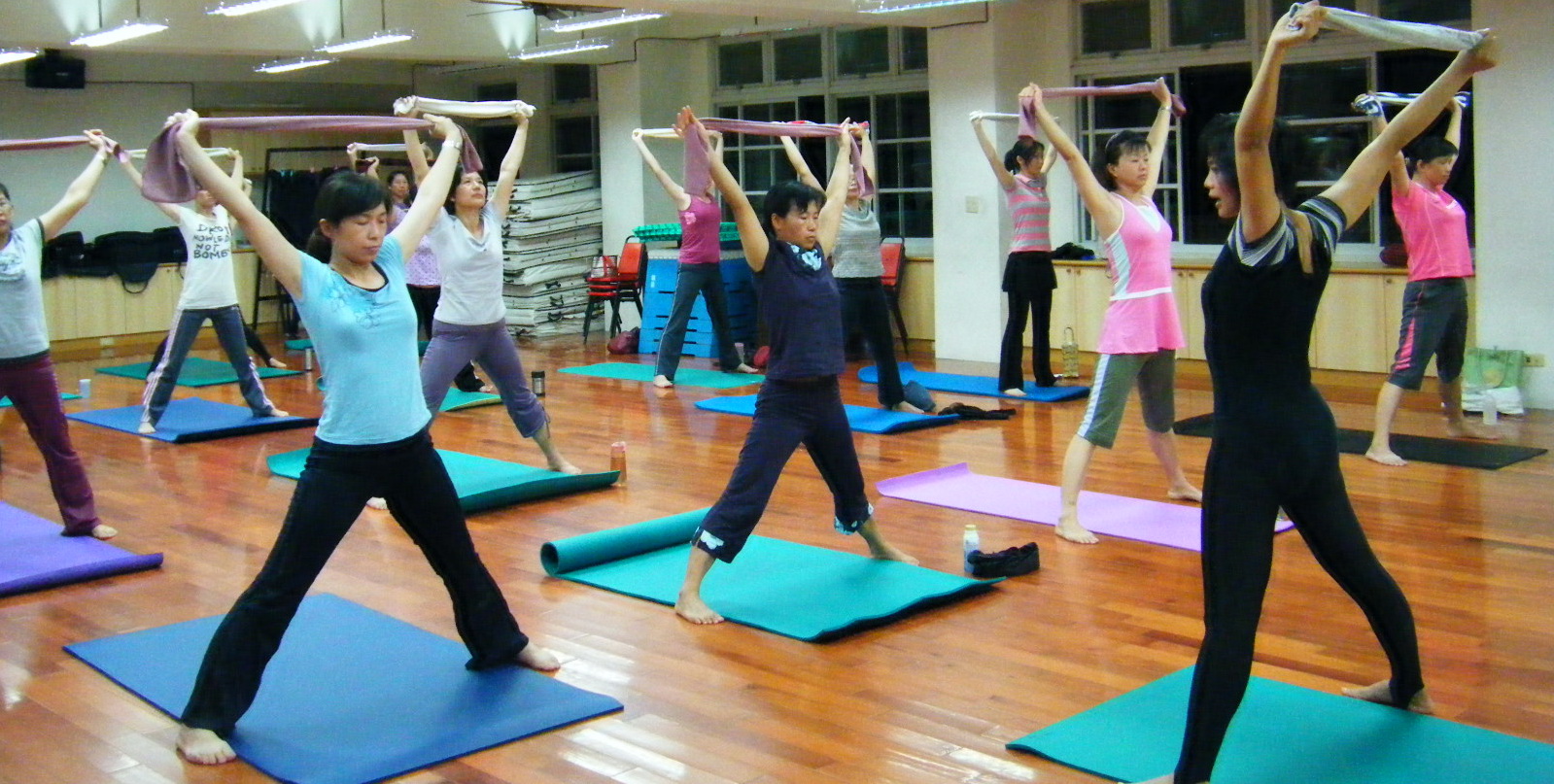
4.藝術表達課程:曾經在家開辦農民學校,晚年力求過簡樸生活的俄國文學家-列夫‧托爾斯泰(Leo Tolstoy,1828-1910)認為文學、音樂、雕塑、繪畫等技巧只是藝術創作的媒介,藝術創作者應該要能清楚表達出因親身經歷而受到感動的內心情感,並且能讓人充份的感受到藝術創作者的情感表達並經驗到相同的情感是藝術活動的基礎,而透過藝術使人的心靈和另一個人的心靈融合在一起,使人的思想情感聯成一體,這正是托爾斯泰所追求的社會人生理想。
然而許多藝術相關領域的學習均著重在如何呈現作品美感的技巧,而忽略了作品背後所要傳達的意義。因此課程教學注重的並非是作品本身的美醜,而是讓一般人也能藉由藝術,不僅能清楚表達出個人的經驗情感,並因自我覺察讓心靈得到療癒,進一步亦有能力呈現社會群體的共同體驗促進社會轉化。
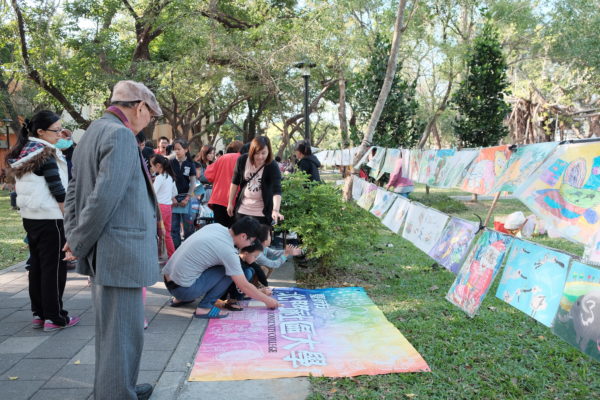
5.語言文化課程:語言是最基礎的溝通工具,同時也是認識其他文化的重要媒介。在全球化發展的趨勢下,不同族群間的交流互動日漸頻繁,僅能使用語言對話,確全然不知對方的文化背景對其思考脈絡與價值選擇的影響,不僅無法真正欣賞不同的族群文化,建立出良善的關係,也對化解種族的刻板偏見與衝突對立毫無建樹。
因此透過學習語言,不僅是讓學員學習到溝通的工具,也能理解與尊重不同族群文化間的差異,並培養出與其他族群和睦共處的人際能力,以建構出更開闊的世界觀。

6.自主生活課程:此分類係為呼應北門社大「小而美」之價值呈現。當今社會在資本體系大規模量化生產下,人們越來越依賴消費市場所提供的商品,在不知不覺中已喪失生活自主權,看似擁有眾多選擇,但實際是只有符合資本企業利益的商品才會被上架販售,在消費市場的運作下,個別的獨特性漸漸消逝,人的生活與價值選擇越來越趨近一致化。
透過此系列課程的規劃引導民眾在「自己動手做」的過程中,體認到生活中有多種的選擇是可以靠自己動手創造,人們應朝向減少大量生產快速複製的消費模式,重新拿回生活自主權,創造社會生活的多樣性。

■The Idea of Running
The service region of Beimen Community College includes six districts: Beimen, Jiangjun, Qigu, Xuejia, Jiali, and Xigang, these areas include about two-thirds of Tainan coastline. Hundred years ago, most of the land still belonged to Daofeng and Taijiang Inner Sea area, the significant changes in the natural environment have a profound historical impact to the residents living culture and local manufacturers. At the beginning of the college, these six districts were included in Beimen District on the administrative division, so made ‘Beimen Community College’ in the name. The area is taken as a remote area whether on location or resource. The principal engagements of residents are agriculture and fishery. Although the people here are simple and attached to the interaction among neighbors, however, the population is aging and is also weak to use social resources and information. And the global trend impact makes the local manufacturers and culture even worse. Therefore, at the beginning of the Beimen Community College, the direction has been identified as “to build a small but excellent community college which mainly supports the development of the rural fishing village”.
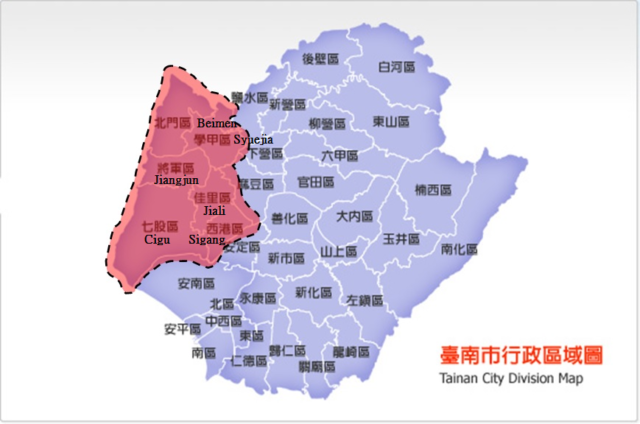
What is the “small but excellent community college”? “Small but excellent” is not only the cord idea of Beimen Community College but also the practical guidelines of the work team. This thesis is from Dr. E. F. Schumacher’s book: “Small is Beautiful” -“self-restriction, self-restraint, and limitation – is the power to give life and protect life. Such thinking is the best way for the great Beimen area to deal with weak, fragile environmental characteristics. At the same time, we recognize that:
Economic development can only be “to a certain extent”;
Life can only be complicated “to some extent”;
The pursuit of efficiency or productivity can only “to some extent”;
The use of non-reusable resources can only “to some extent”;
Complete humanity can only endure “to some extent” to the fine division of labor;
“Scientific methods” instead of general knowledge can only “to a certain extent.”
Therefore, when we considered the scale of the Beimen Community College, we limited to “small.” It’s not only because of the reality of sparse population of this area but also followed the guidelines of Dr. E. F. Schumacher’s idea: “we can not count the real serious business of life in numbers, it should address the real needs of mankind.”. This approach strengthened our “small and beautiful” choice.
At the same time, this is the value of selection in the work site of Beimen Community College. For example, the scale of hot courses do not over-expand, it would make people have the profound connection, so the teachers have more capacity to care about the state of students in the class. Discussing the future development of the community would always get the reminder from college, to make residents think the price of over-development is the expecting life of the community or not. Planning industry would consider making the ecological community as mainstay sustainable development, and it would be according to realistic goals of the community. Moreover, set the realistic targets according to the status of the community, rather than making a significant amount of replication promotion to meet the social performance in a rush. We believe that people should not be alienated from work, that social workers are not small screws within the organization, but a complete “person” to create value for the organization. So the division of work in Beimen Community College is a parallel split.
On the other hand, the main argument for “supporting the development of the community in the rural fishing village” is still based on the development of Dr. E. F. Schumacher’s exposition:
development does not begin with the material but starts with the education,
organization,and discipline of people.
In the causes of poverty, material factors – such as insufficient natural resources,
insufficient capital, inadequate infrastructure – are all secondary. The main
reasons are non-material, and they stem from certain deficiencies in education,
organization, and discipline.
Therefore, we are very conscious that the number of students and the unlimited expansion of the community is not our goal. We should use our limited resources for community and adult learning. We hope to learn how to activate the community, build mutual trust and share cooperation of the living environment.
■The development spindle of Beimen Community College
Since Beimen Community College’s founding in 2005, the administrative team, NGO partners, and community friends continue to discuss and revise the vision through workshop or study groups, hoping to figure out the best way of operating the agricultural fishery community college. They currently plan out of the two primary development directions:
1.To support students’ self-learning and take an active interest in public affairs
2.To promote the sustainable development of ecological communities.
1. To support students’ self-learning and take an active interest in public affairs
“Promoting self-regulated learning and taking an active interest in public affairs” is an important concept in the development of civil society in response to the development of community colleges in Taiwan. Therefore, the Beimen Community College expects students to develop the following abilities during study:
Motivation → Motivational Issues & Organizational Competence → Participation in Public Issues (Mature Citizens)
When the college starts course into the community, it is designed to tailor the community-based learning projects, and also to encourage the lecturers to develop lessons with the spirit of “responding to community needs and enhancing community development.” Hoping in this process, it can foster the ability for general public to participate in public affairs, arouse the social concern, through care, participation and learning to form the consciousness of the community.
Of course, it is an important challenging for Beimen Community College to embody the core public value in planning courses to the general curriculum. Therefore, the college tries to put the concept of open learning through three modes: (1) class entering the community, (2) issue entering the course, (3) courses interflow. So in every semester, those participants in the course can also at least have a chance to meet the core concept of the college in the course, trigger the possibility of concerning public affairs.
On the other hand, after years of accumulation of school experience, discussion, experiment and reflection, Beimen Community College divided the current curriculum structure into six categories: satoumi course, community course, physical and mental healing course, artistic expression course, language and culture course, and self-living course. However, because of the population of the considering area is difficult to support developing the massive scale of Beimen Community College, so there are not enough students to support the complete developing course. Therefore, we will not consider the planning of the course; we will only plan the category as the curriculum structure. The course classification is as follows:
A. Satoumi Course:
To highlight the development prospect of the community from Beimen Community College, we actively promote the construction of “Great Beimen ecological sustainable community” based on the Satoumi spirits, so we named this category as “Satoumi.” Course content is mainly for the human ecological environment features and demands of Beimen environment. The program will be developed in partnership with community and local non-profit organizations to plan curricula that meet the needs of local communities, and encourage teachers to go to the community and develop curriculum plans to “respond to community needs and strengthen community development.”
Therefore, both of the critical issues of the Beimen coastal areas facing dramatic changes, or leave a record for the rich agricultural and fishing villages in the local knowledge and cultural landscape, are still the curriculum planning great direction.
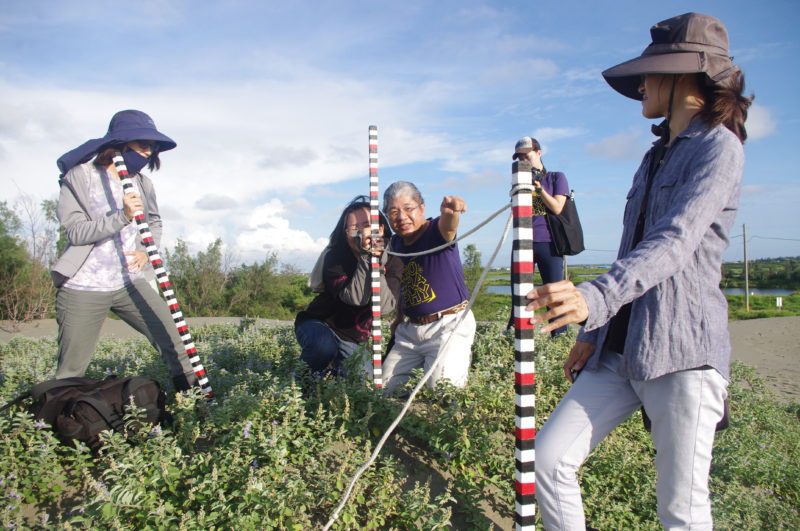
B. Community courses:
To develop curricula to make the association independent and the public is the ultimate expectation of Beimen Community College. Potential community curriculum refers to that the participants of the course have not yet reached a consensus of the community, but have formed a good group and actively participated in the class operation. The course teachers are also conscious of the development of the curriculum towards community process. The self-governing community curriculum is that the participants of the course have a common understanding of the elaboration of the community and have set up a community. They can also work independently and with high autonomy.
At present, for the potential or homogeneous class, we encourage to transform to an independent self-learning community, to make members show their autonomy on planning courses, recruiting new members, being each other’s teachers, and share the knowledge together. The school is positioned as the role of companions, to assist the development of the community, not to participate in the leadership, but training students self-learning.

C. Physical and mental healing courses:
Leisure Fitness is an essential solution for modern people to release stress. At the adult learning work site of the college, you can see the huge demand for such courses from the public mass; the courses have significance for ordinary people; community college should not take it recklessly.

D. Artistic Expression Course:
Leo Tolstoy (1828-1910), a Russian writer who once set up a peasant school at home and tried to live a simple life in his later life, thought that the techniques of literature, music, sculpture, and painting were only the medium of artistic creations. Art creators should be able to clearly express the inner feelings that have been touched by the personal experience and can make people feel the emotional expression of artists and experience the same emotion is the basis of artistic activities. Through art make people’s minds and other people’s souls together, make people’s thoughts and feelings together, which is the pursuit of Tolstoy’s ideal of social life. However, much art-related learning focuses more on how to present the beauty of work skills but ignoring the meaning behind works which supposed to convey. Therefore, the focus of teaching is not in the beauty of the work itself, but also make ordinary people can clearly express the feelings of personal experience and self-awareness, moreover, heal the mind, and further the ability to present social groups of collective experience to promote social transformation.

E. Language Courses:
Language is the most basic communication tool, and also an important medium to understand other cultures. In the trend of globalization, the interaction between different ethnic groups is becoming more and more frequent. Only use language to communicate without knowing the thinking and the impact of choice from other cultural backgrounds, can not make good relationships among different ethnic cultures, and no achievements to resolve the racial stereotypes and conflicts as well.
Therefore, through learning language, not only make students learn the tools of communication, but also can understand and respect the differences between different ethnic groups, and cultivate interpersonal ability to live in harmony with other ethnic groups to construct a more open world outlook.

F. Self-Living Course:
This category is designed to reflect the value of “small but beautiful” of Beimen Community College. Today the society is under the capital system of large-scale quantitative production; people are increasingly dependent on the goods provided by the consumer market, unknowingly has lost the autonomy of life. Seems to have many choices, but the reality is only the goods which have interests of capital, would be sold on the shelf. In the operation of the consumer market, the individual uniqueness gradually fades away, people’s lives and values closer to the consistency.
Through the planning of such courses, the public will be guided in the process of “doing it by themselves” to realize that a variety of choices in life can be created on their own. People should move towards reducing consumption patterns of rapid mass reproduction, take back their life autonomy, and create the diversity of social life.
2. To promote the sustainable development of ecological communities
“Promoting Eco-Community Development” is the main objective of Beimen Community College for entering the community to address the pressing problems which community faced.
At the beginning of the college, Beimen Community College’s most important partners, Qigu Coast Protection Association worried the severe loss of Qigu lagoons sandbar, so Qigu protection sandbar action becomes Beimen Community College’s outstanding issues in community development.
However, during the sand protection operation, Beimen Community College has also fully recognized that community development should not only be the work of environmental protection. To link people’s lives, community livelihoods, and sustainable ecology is the way to assist the sustainable community development. Therefore, in addition to the sand protection movement, Beimen Community College begins to develop the local humanities, industry and other related courses and activities, such as milkfish, mullet roes, and other fish processing courses. We also design a variety of “Big Beimen small travel” activities, hope through the agricultural and fishery products to talk about the origin of the environmental problems, the safety of food and community aging issues. At present, the main topics to promote includes: A. Protection of the Qigu sandbar, B. Coastal Environmental Monitoring, C. Big Beimen small travel, D. Fishing Tribes.
A. Protection of the Qigu sandbar
The Qigu lagoons are rich in ecology because of the shielding of the three sandbanks (the DingTouEShan, the WangZaiLiaoShan, and the QingShanGangShan) so that nearby residents can settle down here. However, due to abnormal human-made development, the sand source is reduced and wasted, The original sand dunes have gone, windbreak forests have submerged. In this vicious cycle, the sandbar is increasingly broken and reduced, the area of the lagoon reduced from 1,600 hectares to 1,100 hectares, the survival of the fishing village of biological resources are precarious.
In 2007, the Beimen Community College began the sand protection action. Volunteers put fences made of bamboo in the sandbar; it would cause the monsoon brought sand to settle in the sandbar, and would prevent sand being taken away by monsoon as well, the method is simple but has a good effect. However, because of the stakes used to protect bamboo fence collapsing and became less and less, we used straw fixing way instead. Use the straw which left after harvesting in the nearby areas to be the sand protection material, can reduce the burden on the sandbar environment and make waste reused.
We hope that through continuous coastal environmental education and volunteers’ participation in sand protection work, we can encourage people to care the issue of Taiwan Coast Change. The environmental impact of coastline retreating has formed; sand protection movement may not be able to resist environmental change, but it is the opportunity for people to review the relationship with the land. The combination of volunteer action and sand protection will once again show the Qigu residents’ action force of protecting Qigu coastline; it also shows volunteers’ concern and measures to the marine and coastal environment.
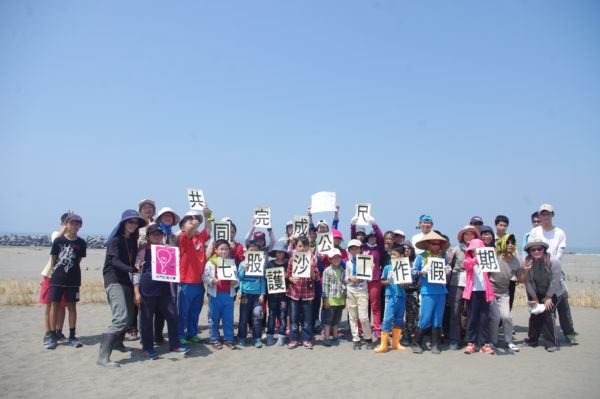
B. Coastal Environmental Monitoring
Since 2008, Beimen Community College has been monitoring the tidal sandbank and the waste of the beach. Currently, the monitoring activities will continue once a month. The specific monitoring date will be announced at Beimen Community College’s website, on the volunteer service section.
▶Coastal sandbar monitoring
The coastal sand monitoring is mainly to understand the status of coastal sandbar changes; Beimen Community College set a fixed sand pile as a monitoring pile; the measurement method is to measure the pile height, to understand the results of coastal protection of sand. However, because of the harsh seaside environment, the monitoring pile has collapsed gradually, so that the monitoring method would be adjusted to the movable pile measurement at the end of 2016. For detailed monitoring data, please refer to http://beimencc.org/archives/category/09海岸監測
▶Coastal waste (referred to as sea debris) monitoring
Beach waste monitoring is mainly carried out in the classification and measurement of beach debris; such monitoring methods can clearly understand the types of coastal waste and the main source. Hoping to get a good control of the garbage source, and also make people review the additional waste production in daily life cause the pollution of the beautiful natural environment.
C. Big Beimen small travel
To make the environmental education action more close to the life and feelings of the general public, we try to create a tourism style that can truly understand the local people’s living and eco-friendly. Through deepening the connotation of travel make tourists have the opportunity to enter the community to see the locals’ life and have a positive interaction, to have a real understanding of the humanities and natural environment, furthermore, to rethink the food origin of environmental protection and support the local production and consumption.
Take “A small trip about the foods origin of oyster omelet ” as an example, from the understanding of Taiwan’s national snack – oyster omelet as the starting point, to collect the ingredients of oyster omelet. : To the lagoon to pick up a string of oysters and learn how to open oyster shell, to community grandmother’s vegetable garden to pick vegetables, eggs and so on. And then invite the owner of the food stalls to teach tourists to make an oyster omelet. Through these processes allow participants to rethink the way food is produced, the food production environment, the plight of farming villages, and the simple lifestyle which the inhabitants respond to nature. Please refer to the related activities: http://beimencc.org/大北門小旅行

D. Fishing Tribes.
Why does Beimen Community College want to promote eco-farming program? Have to trace back to the history of hundred years the Qigu milkfish feeding development. The first Qigu milkfish breeding was in the shallow fishing farms, for milkfish the water temperature in winter was too little to survive. So the fish farm in winter was always in the idle state, at this point, the different fish inside the fish farm has become an important food source for winter migratory birds, which makes Qigu become a significant habitat of Black-faced Spoonbills. However, the modern deep-water fish farming is no longer restricted by the season; it is unfavorable for the foraging of migratory birds. On the other hand, in recent years, the prices of milkfish have been declining, and it is not easy for young people to get employed. So to figure out there is a natural friendly way of farming can help young people to stay in Qigu, is the goal and vision of Beimen Community College. The sustainable development of human livelihoods and nature has reached a balance in the past in Qigu, and the challenge now is to find back the balance again. Ecological farming is the first step.
As a result, Beimen Community College cooperates with its community partners to develop a “Fishing Tribes,” through shareholders stocks sharing model, to seeks and create an alternative development way for the community industry. Its name implies a group of partners who wish to work together, to create the embers for the vitality of breeding. We also tried to apply CSA (Community Supported Agriculture) model to farming fisheries. At present, shareholders are invited to participate in the work of fish farming on two hectares of the fish farm. The shareholders can not only gain knowledge of aquaculture and environmental ecology, but also learn safety ingredients, and contribute to the ecological environment. It also supports the fishermen who are committed to the green aquaculture industry. Now community partners provide aquaculture fish farm, technical advice, and practical assistance, use low density, low facilities, low management of fish polyculture approach to get ecological balance; base on the concept of ecological equilibrium, community mutual benefit, and the ecological symbiosis, to process economic production of ecological farming. Friendly to the environment, to reduce the plundering and make all things coexist to create a pollution-free breeding environment, not only to keep safe and healthy food fish but also taking water, soil and the surrounding ecological diversity and balance into account, to experiment the new possibilities of fishing village life for future.
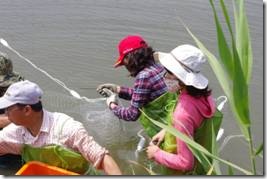
Tel: + 886-6-7236483
Fax: + 886-6-7236485
E-mail: [email protected]
Website: http://beimencc.org/
Facebook Page: 台南市北門社區大學
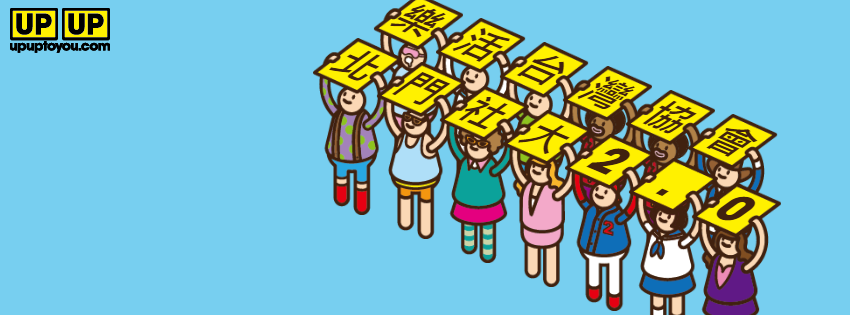
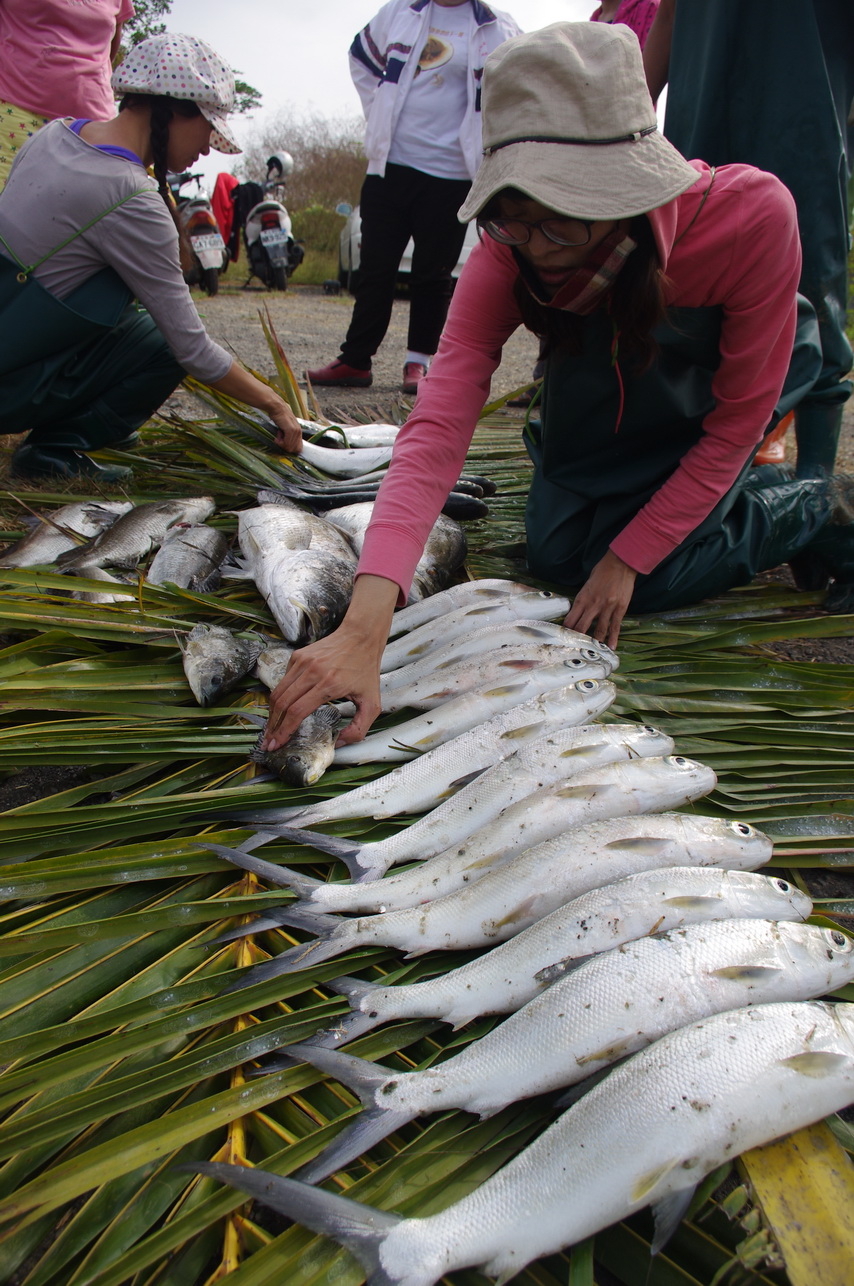

真樂見,北門社大的網站終於採用互動式架構!加油…
kueili 你好:
謝謝您的加油,我們會更加努力。
北門社大